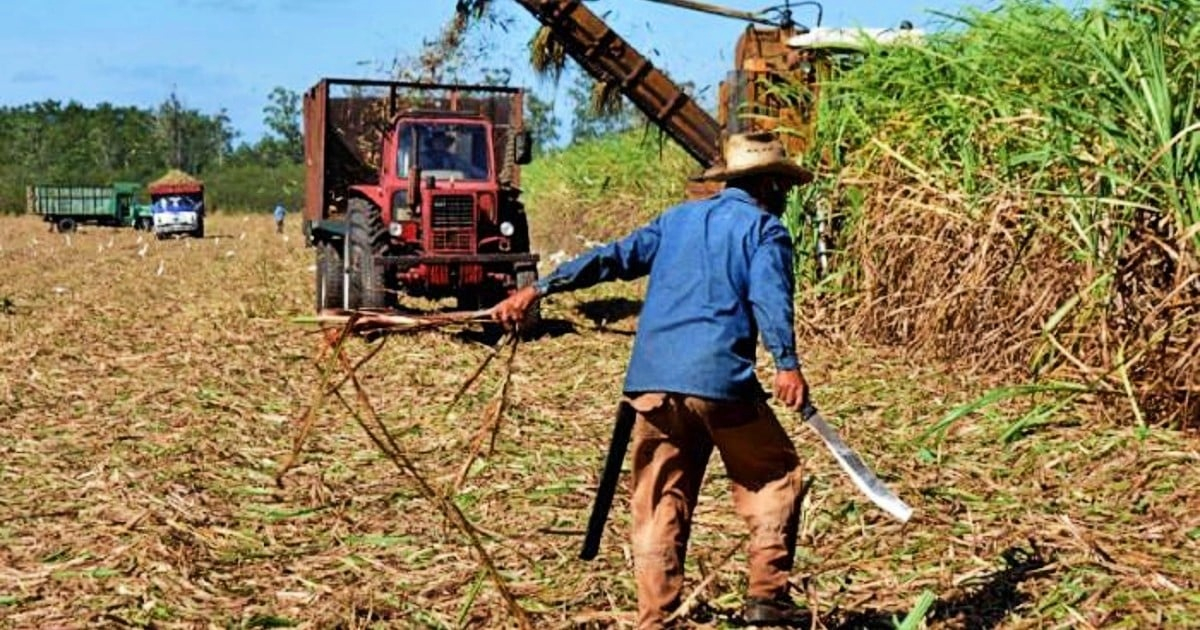Amaury Depestre, director of the “14 de Julio” sugar mill in Cienfuegos, admitted this week that to complete the last harvest and meet the plan, he had to resort to 113 prisoners who joined the workforce. “We need to work together, the governments, the Party, the sugar mills... We all need to find solutions to develop the harvest. We must unite now for the next one,” he stated.
During a debate held on Monday night, ahead of the parliamentary session scheduled for Wednesday, Depestre—cited by the official portal Cubadebate—did not specify the conditions under which the prisoners worked. However, since March, both Cubans and foreigners serving prison sentences in the country have the right to work inside and outside prisons, with regulations that establish their labor and wage conditions, as reported by AFP.
In his speech, Depestre called attention to the wages in the sector and the emigration that has affected it in recent years. This is not the first time that company executives or deputies have complained about the lack of workforce in agriculture, historically impacted by the exodus from rural to urban areas.
Harvest in Crisis
The current situation is further compounded by the massive emigration of the Cuban population abroad and the shift of agricultural workers to better-paying jobs, especially in the growing private sector. Noel Rolando, a deputy for the municipality of Remedios in Villa Clara province, pointed out that besides wages, there are other ways to incentivize and commit workers. “The monetary part is significant, but so is attention. Sometimes, solving workers' problems can influence their performance,” he commented.
Since 2021, the business group AZCUBA has attempted to halt the sector's decline, but the 2022-2023 harvest barely reached 350,000 tons of sugar, which is only 4.4% of what Cuba produced in the early 1990s. Julio García Pérez, president of AZCUBA, did not inform parliamentarians of the final results of the harvest that ended in May.
From February to June, deputies on the Agro-Food Commission evaluated the sugar harvest with visits to 23 agro-industrial sugar companies and 39 agricultural cooperatives producing cane. These visits confirmed the limited availability of lubricants, fuels, and other supplies. “During the harvest, most agro-industrial companies failed to comply with organizational measures to ensure daily tasks and production levels, mixing subjective issues with real shortages, revealing indiscipline and lack of demand from cooperative presidents and area managers in the industry,” commented the president of AZCUBA without providing figures.
García Pérez also mentioned the fluctuation of the labor force as a distinctive element in recent years in the sector. At the end of the first quarter of 2024, there were 6,723 state workers and 7,418 cooperativists available. Another issue that negatively affected the harvest and industrial processes was the burning of cane. In total, about 750,000 tons were affected; 16,000 hectares were not harvested, remained in the fields, and therefore affected the plants, according to the president of AZCUBA.
Julio García Pérez emphasized the need to find innovative solutions to stop the deterioration facing the sugar agro-industry.
Key Questions on Cuba's Sugar Industry Challenges
In light of the critical situation in Cuba's sugar industry, several questions arise regarding the use of prison labor, sector challenges, and potential solutions. Here we address some of these key concerns.
Why is Cuba's sugar industry using prison labor?
Cuba's sugar industry has turned to prison labor to address a severe shortage of workers. This measure aims to complete harvests and meet production plans amidst declining workforce availability and increased emigration.
What are the conditions for prisoners working in the sugar industry?
While specific conditions for prisoners working in the sugar industry were not detailed, regulations since March allow both Cuban and foreign prisoners to work inside and outside prisons under established labor and wage conditions.
How has emigration affected Cuba's agricultural workforce?
Emigration has significantly impacted Cuba's agricultural workforce by reducing the number of available workers. Many agricultural workers have shifted to better-paying jobs in the growing private sector, further exacerbating labor shortages.
What measures are being taken to address the crisis in the sugar industry?
Measures to address the crisis in the sugar industry include evaluating organizational practices, addressing supply shortages, and seeking innovative solutions to stabilize and improve production levels. Efforts also focus on addressing wage issues and labor force fluctuations.
